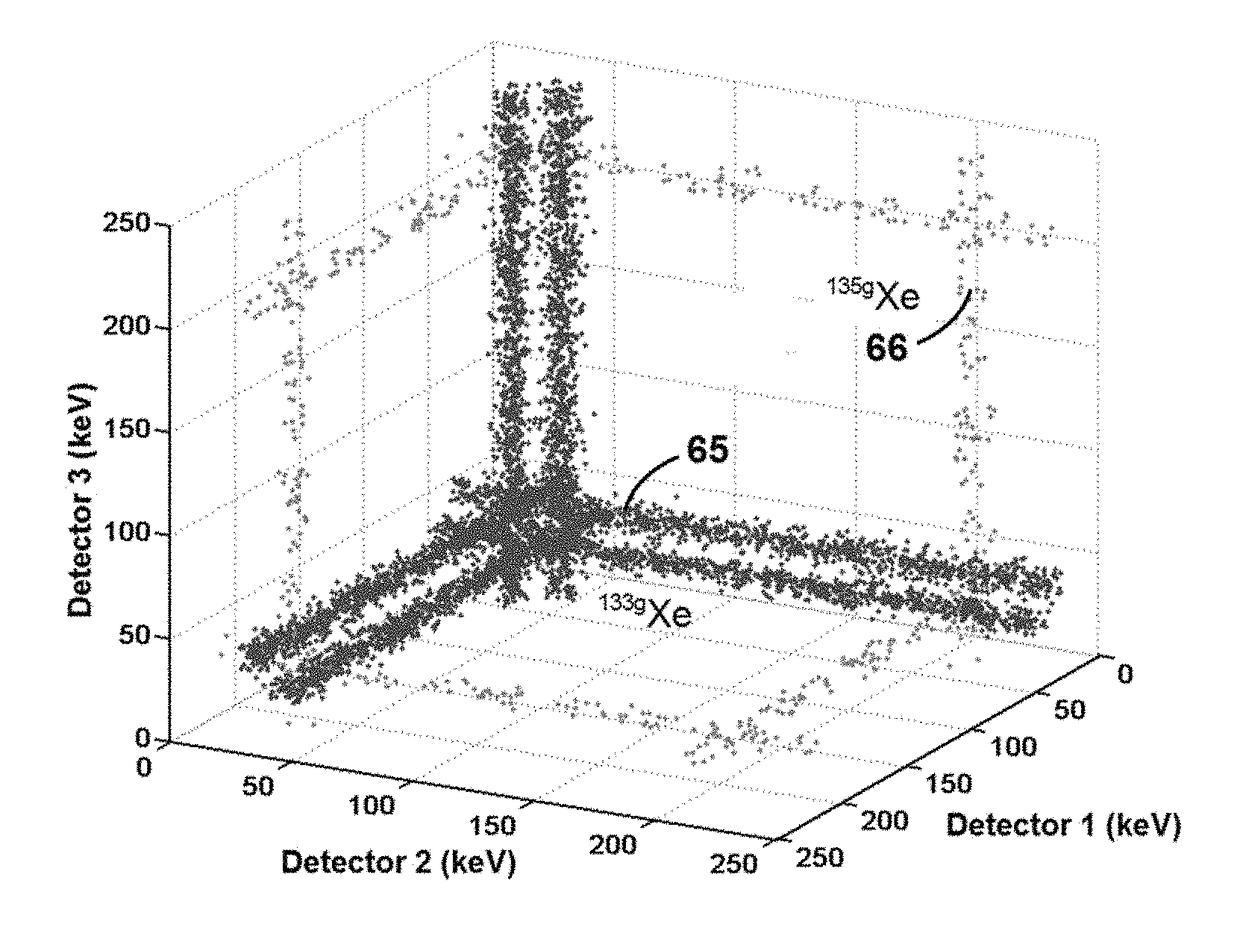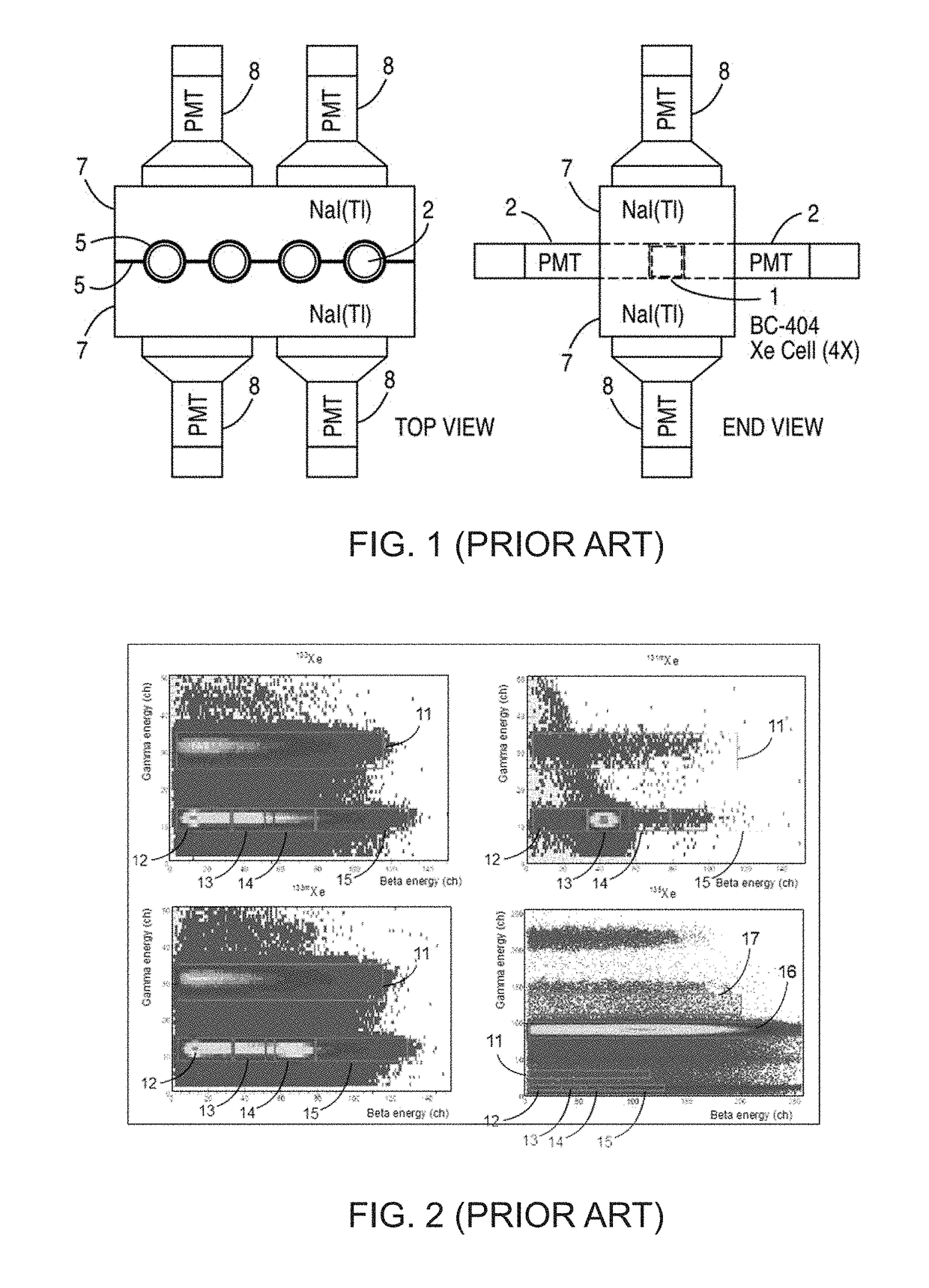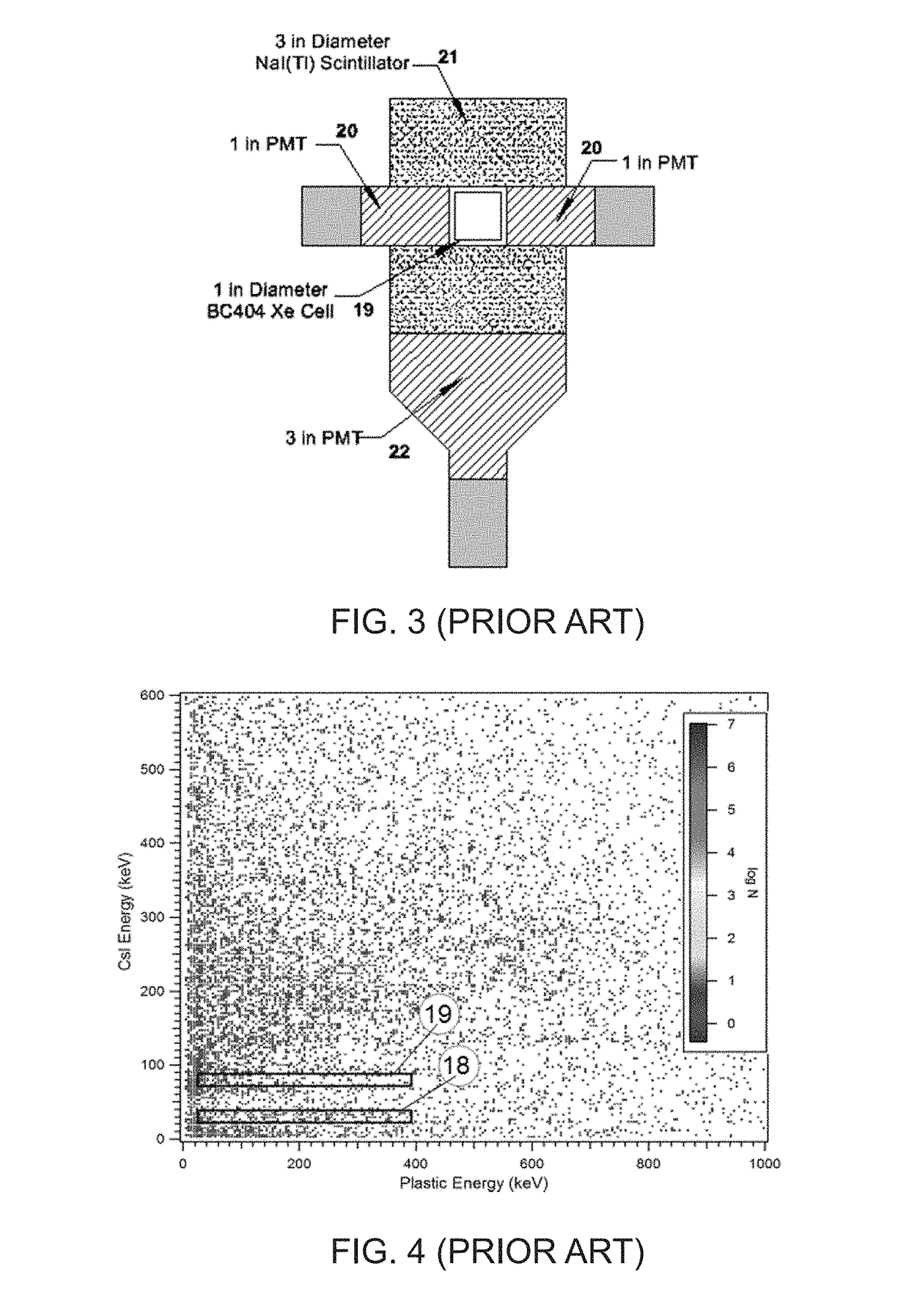Method and apparatus for detecting dilute concentrations of radioactive xenon in samples of xenon extracted from the atmosphere
a radioactive xenon and sample technology, applied in the field of methods and apparatus for detecting dilute concentrations of radioactive xenon, can solve the problems of not quite as good detection limits as arsa and sauna, no optical isolation between the two scintillators, and the technology limit has been reached, so as to reduce the cross detector background, reduce interference, and reduce the cross detector cross section
- Summary
- Abstract
- Description
- Claims
- Application Information
AI Technical Summary
Benefits of technology
Problems solved by technology
Method used
Image
Examples
Embodiment Construction
[0013]1. The principle of geometrical partitioning[0014]2. Background measurements[0015]2.1 Detector configuration[0016]2.2 Double coincidence backgrounds[0017]2.3 Triple coincidence backgrounds[0018]3. Estimated detection limits[0019]4. Reduction of interferences[0020]5. Preferred embodiment with N equal to[0021]6. Preferred embodiment with N equal to[0022]7. Using a scintillator as the optical coupler[0023]8. Operation as a complete detector system[0024]9. Additional detector system embodiments[0025]10. References[0026]11. Conclusion
Abstract of the Disclosure
BACKGROUND OF THE INVENTION
Field of the Invention
[0027]The present invention relates generally to systems for detecting very low levels of radioactive xenon isotopes (also “xenon radioisotopes,” or simply “radioxenon”) in samples of xenon extracted from the atmosphere and, in particular, to detectors for this purpose of the type commonly referred to by those skilled in the art as “beta / gamma” detectors.
A Synopsis of Current Pr...
PUM
 Login to View More
Login to View More Abstract
Description
Claims
Application Information
 Login to View More
Login to View More - R&D
- Intellectual Property
- Life Sciences
- Materials
- Tech Scout
- Unparalleled Data Quality
- Higher Quality Content
- 60% Fewer Hallucinations
Browse by: Latest US Patents, China's latest patents, Technical Efficacy Thesaurus, Application Domain, Technology Topic, Popular Technical Reports.
© 2025 PatSnap. All rights reserved.Legal|Privacy policy|Modern Slavery Act Transparency Statement|Sitemap|About US| Contact US: help@patsnap.com



